Analytical & chemical lab
What do I need to know?
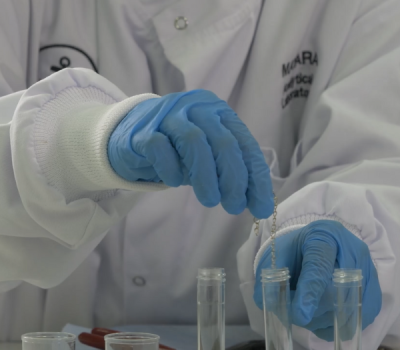
Providing a diverse array of testing and certification services
Welcome to our Analytical and Chemical Lab! We take pride in offering a diverse range of industry-standard and unique testing services, along with certification services and expert analysis across various industries. While our roots lie in the analysis of precious metals, we’ve expanded our capabilities over the years. Thanks to investments and a keen understanding of market trends, we now hold extensive knowledge and experience in testing a variety of products, from costume jewellery and watches to luxury items, fashion products, and more. It’s worth noting that our Analytical Laboratory holds UKAS Accreditation, ensuring the highest quality in a wide range of international tests, including those necessary for product safety compliance under REACH and RoHS, as well as U.S. regulations. We’re excited to bring our commitment to excellence to your testing needs!

AnchorCert Protect
- ACP 1
- ACP 1 – Eyewear
- ACP 2
- ACP 3
AnchorCert Pro is a unique accredited to ISO/IEC 17025 by UKAS testing method that identifies and measures a suite of 16 metallic elements that may cause Allergic Contact Dermatitis (ACD) and provides regulatory compliance in relation to REACH, Nickel and General Product Safety for jewellery, watches, spectacles, hair accessories, footwear and clothing trims, and many more products.
See more about ACP Testing
Samples of metal parts of spectacle frames, ready-to wear spectacles, sunglasses and other items for eye and face protection are tested according to the ‘AnchorCert Pro 1’ test methodology. This accredited method covers the release of 16 metallic elements to assess the potential to cause an allergic reaction to human skin and assesses the criteria as specified in Nickel Release: BS EN 16128:2015 and GPSD: General Product Safety Regulation 2005 from a skin allergy point of view due to metals. A minimum of 2 samples of the same identical spectacle is necessary for testing according to test standard EN16128:2015. Both samples must pass for the model to pass. The elements tested include: Nickel (Ni), Chromium (Cr), Cobalt (Co), Gold (Au) and Mercury (Hg), Beryllium (Be), Platinum (Pt) and Palladium (Pd), Manganese (Mn), Aluminium (Al), Copper (Cu), Iron (Fe), Molybdenum (Mo), Tin (Sn), Titanium (Ti) and Zinc (Zn). Also applicable to ACP1, ACP2, ACP3.
AnchorCert Pro is a unique accredited to ISO/IEC 17025 by UKAS testing method that identifies and measures a suite of 16 metallic elements that may cause Allergic Contact Dermatitis (ACD) and provides regulatory compliance in relation to REACH, Nickel and General Product Safety Regulations for jewellery, watches, spectacles, hair accessories, footwear and clothing trims, and many more products. ACP 2 also includes testing in line with Lead and Cadmium, creating your all-in-one test for total compliance.
AnchorCert Pro is a unique accredited to ISO/IEC 17025 by UKAS testing method that identifies and measures a suite of 16 metallic elements that may cause Allergic Contact Dermatitis (ACD) and provides regulatory compliance in relation to REACH, Nickel and General Product Safety Regulations for, watches. ACP 3 also includes testing in line with Lead and Cadmium, creating your all in-one test for total compliance plus following guidelines for the RoHS Directive 2002/95/EC plus amending directives. *The scope of this test does not cover compliance for DEHP, BBP, DBP or DIBP phthalates covered under RoHS 3.
Our brand and retail partners


























Analytical & Chemical Lab Testing
- Quick Nickel
- Full Nickel
- Nickel - Eyewear
This is an accredited in-house method for release of nickel from all post assemblies, which are inserted into pierced parts of the human body and articles intended to come into direct and prolonged contact with the skin.
The Quick Nickel test accurately identifies items which would definitely ‘pass’ or be ‘likely to fail’ if tested to BS EN 1811:2023. The test can be completed in a shorter time. In the majority of cases (more than 98.8%), passing the ‘Quick Nickel test’ indicates that items will pass EN 1811 and comply with the REACH Regulations. This is an acceptable
level of certainty from a scientific point of view. Many major retailers are now accepting this as a valuable part of their due diligence programmes.
See more about Quick nickel testing
The use of nickel is regulated under REACH in products which are intended to come into prolonged and direct contact with the skin as Nickel is the most common cause of allergic contact dermatitis (ACD). It is estimated that around 20% of the European population are thought to suffer from Allergic Contact Dermatitis.
Our full nickel test is an UKAS accredited test based on BS EN 1811:2023 and BS EN 12472:2020 – ‘Reference test method for release of nickel from all post assemblies which are inserted into pierced parts of the human body and articles intended to come into direct and prolonged contact with the skin’.
Products are subjected to a Corrosion/Wear simulation of two years of use according to BS EN 12472:2020. Products are then disassembled into their component parts and the nickel release determined for each component.
Products are first subjected to a Corrosion/Wear procedures to simulate the impact of two years’ wear on the surface finish according to BS EN 12472:2020. The items are then split into components, masked off as appropriate and each component submerged in artificial sweat solution in an individual container. To avoid contamination each container is disposable and great care is taken throughout not to introduce any trace of nickel which could jeopardise the results. After seven days of immersion, held in an oven at 30C, the sweat solution is transferred to clean flasks and analysed by ICP-OES to determine the amount of nickel released. The surface area of the item from which the nickel was released is then calculated and reported, in accordance with the method and the requirements of the REACH regulation.
This method is used to determine whether the nickel is released from products intended to come into direct and prolonged contact with the skin will not exceed 0.5 μg/cm2/week (0.5 micrograms per square centimetre per week) and for Post Assemblies the limit is set at 0.2 μg/cm2/week (0.2 micrograms per square centimetre per week).
This accredited method is based on BS EN 16128:2015, as required by Regulation (EC) No. 1907/2006 on REACH. This method covers the testing of metal parts of spectacle frames, ready-to wear spectacles, sunglasses and other items for eye and face protection for nickel release.
All coated/plated items are subjected to accelerated wear and corrosion procedure based on BS EN 12472:2020 prior to the detection of metal release. The reference method supports the demonstration of conformity with the limit value for nickel release of 0,5 μg/cm2/week set forth by European Regulation. A minimum of 2 samples of the same identical spectacle is necessary for testing according to test standard EN16128:2015. Both samples must pass for the model to pass.
- Lead & Cad full test – metal
- Lead & Cad composite – metal (REACH ONLY)
- Lead & Cad full test – non-metals
- Lead & Cad composite – non-metals (REACH ONLY)
- Lead release test
- Canada lead test – full test only
- Multi territory tests
- Crystal glass testing combined and full tests
- RoHS & packaging directive test
Lead (Pb) is toxic at very low levels of exposure. It accumulates in the body, and regular exposure to even very low quantities may badly damage intellectual and behavioural development in young children and have adverse health effects for adults. Cadmium (Cd) can still be found in the jewellery industry, despite having long been recognised as a toxin and a known carcinogen, harmful when it is ingested or inhaled. As such, they are widely restricted.
This test covers all types of jewellery and hair accessories, which are then sampled on a component basis based on material types such as metals, plastics, textiles, paints, coatings, glass, and leather. Following acid digestion, the samples are analysed by ICP-OES to determine their content values and reported based on the following regulations depending on the territory requested:
EU REACH Directive (Restriction, Evaluation, Authorisation and Restriction of Chemicals), as specified in –
Lead: Entry 63 of annex 17 of REACH Directive (1907/2006).
Cadmium: Entry 23 of annex 17 of REACH Directive (1907/2006).
CONSUMER PRODUCT SAFETY IMPROVEMENT ACT (CPSIA) restricts lead content in Children´s Jewellery Products designed or intended primarily for children aged 12 years old or younger.
PROP 65: California metal containing jewellery and embellishments on textiles law; Lead content in adults and Lead and cadmium content in Children´s jewellery and embellishments on textiles. Children applies to age 15 and under.
Canada Consumer Product Safety Act (CCPSA), the Children’s Jewellery Regulations (SOR/2011-19) and Surface Coating Materials Regulations restrict Lead (Pb) and Cadmium (Cd) in children’s jewellery products which are designed or intended primarily for use by children under 15 years of age (tweens-young teens)
Every Metal Component on an item is tested individually and get a result for each component. Minimum 10mg.
Same as the full test but 3 metal components can be tested together and 1 result for all three components is reported. Minimum 10mg
Every non-metal Component on an item is tested individually and get a result for each component. Minimum 10mg
3 non-metal components can be tested together and 1 result for all three components is reported. Minimum 10mg
The above composite test Excludes Paints and glass stones – THEY MUST BE TESTED INDIVIDUALLY.
Determination of Lead (Pb) (& Cadmium) migration in accessible parts of articles (not regulated by any other relevant EU legislation) supplied to the general public that can be mouthed by children (smaller than 5cm in one dimension). Ref Entry 63 (paragraphs 7 to 10) Annex XVII to REACH Regulation. Test article is placed into an artificial saliva solution and agitated for one hour and the extract is analysed by ICP-OES.
Lead (Pb) and Cadmium (Cd) in children’s jewellery products which are designed or intended primarily for use by children under 15 years of age (tweens-young teens) – with reference to Canada Consumer Product Safety Act (CCPSA), the Children’s Jewellery
Instead of receiving one report for each territory, you can choose to select multiple territories and have a single compliance report issued for the tested item.
Both tests offer to determine if a glass stone is crystal glass (and therefore exempt) or if it is compliant with REACH Lead Regulation.
Combined Crystal test – This is a quick qualitative test, item will first be submitted for lead testing, if it contains less than 500ppm of lead than the item is compliant with the Lead REACH Regulations, however if the item fails the lead test then it will be tested further automatically to determine if it is crystal glass, this test will state if the item is crystal glass or not or if it’s compliant with the lead reach regulations, it will not state the category of crystal glass or give any numerical values.
Full Crystal identification test – This is a full quantitative test, this will state if the item is crystal glass or not or if it is compliant with the lead reach regulations, it will also state the category of crystal glass and give all numerical values.
The Restriction of Hazardous Substances in Electrical and Electronic Equipment (RoHS) Directive in the European Union (EU), in conjunction with Waste Electrical and Electronic Equipment (WEEE) legislation, aims to protect human health and the environment by restricting the use of certain hazardous substances in new electronic and electrical equipment.
RoHS is intended to affect manufacturers, sellers, distributors and recyclers of electrical and electronic equipment (including watches with batteries) containing lead, mercury, cadmium, hexavalent chromium, polybrominated biphenyls (PBBs) or polybrominated diphenyl ethers (PBDEs), and encompasses materials both manufactured and imported into the EU. Our accredited RoHS method determines the amounts of Lead, Cadmium, Mercury, Chromium (Total Chromium) by ICP-OES technique or by XRF screening, Bromine by XRF screening and Hexavalent Chromium by Spot test, Boiling Water Test (BWT) or Colorimetric (UV-Vis) method. *The scope of this test does not cover compliance for DEHP, BBP, DBP or DIBP phthalates covered under RoHS 3.
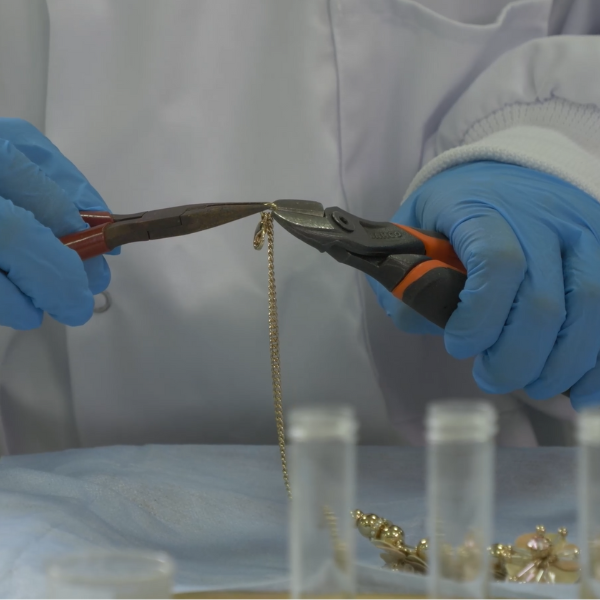
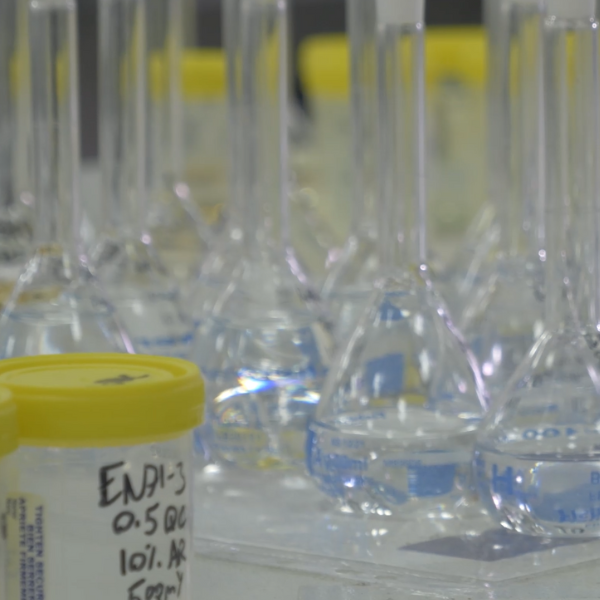
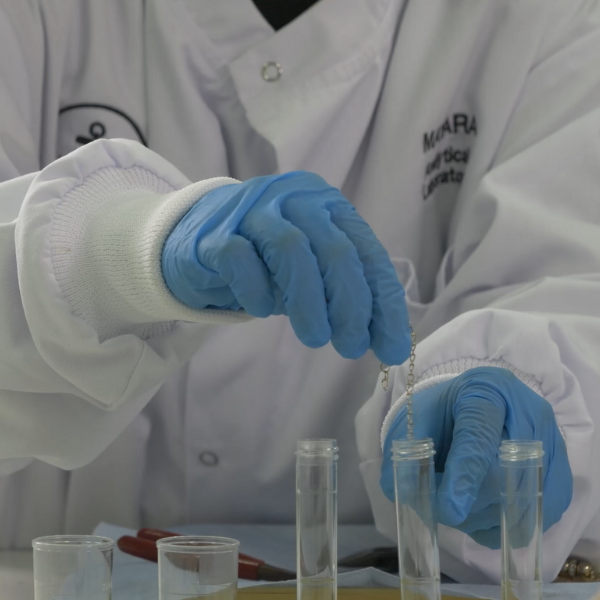
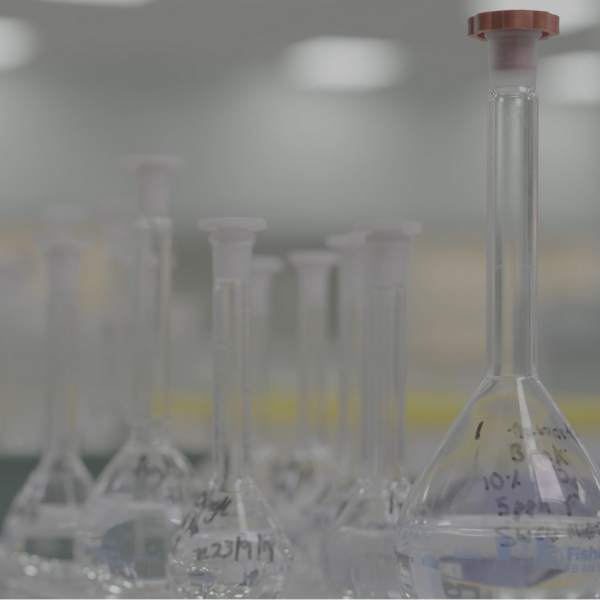
Precious Metals Testing and Analysis
- By fire assay
- Silver titration - potentiometric titration
- Touch acid
- Element analysis by ICP
- Overview of melt and assay of precious metals
The cupellation method for the determination of gold in gold jewellery alloys and is based on BS ISO 11426: 2021. Fire assay is the traditional destructive method of gold analysis. An assay report will be produced which contains details of the amount of gold in the sample.
Fire Assay Collection: the most usual process for gold is traditional Fire Assay by cupellation (following ISO 11426). This test is accredited to UKAS 17025. This requires small samples of gold to be carefully weighed before being wrapped in lead foil together with a pre-determined quantity of silver. The samples are placed on porous “cupels” and subjected to a furnace firing at 1100 degrees Celsius during which the lead, plus any base metals, are absorbed into the cupel as oxides. This leaves sample beads of pure gold and silver which are boiled in nitric acid to dissolve out the silver and then annealed to complete the process, leaving just fine gold. A comparison of the weight of the pure gold with the weight of the original sample provides the degree of purity. An alternative method may be used depending upon the concentration of gold.
This is a destructive test where samples are first dissolved, and the silver content of the resulting solution determined by a Potentiometric titration. This method supports claims that an item can be legally defined as 925 sterling silver. The test is based on a per component test to ensure full product integrity.
This test is a qualitative test to determine the carat of a plated item. This test is based on a per component-based approach. Retailers and brands use this test commonly to allow them to clearly mark their products on their POS and marketing materials.
This is a destructive method that allows for the determination of the concentration of up to 37 accredited elements in products which may be made of metal, polymer, auto-catalyst, powdered, inorganic and non-metallic materials. Elements are either analysed by direct route or when applicable, reported by the difference on a metal basis.
Customer has the options of requesting:
- Single elements which can be reported as an average only or as high, low, and mean results. They can request any of the scan elements which will be accredited. They can also request any of the non-accredited elements in ScanPlus.
- A Scan/ Trace Scan where all 37 elements are analysed. Each element will be reported as an average and one element may be reported by difference on a metal basis if required.
- ScanPlus where 48 elements are analysed (37 accredited elements and 11 non-accredited elements.) Each element will be reported as an average and one element may be reported by difference on a metal basis if required.
Accredited elements include:
Ag, Al, As, Au, B, Be, Bi, Ca, Cd, Co, Cr, Cu, Fe, Ga, Ge, In, Ir, Li, Mg, Mn, Mo, Nb, Ni, P, Pb, Pd, Pt, Rh, Ru, Sb, Se, Si, Sn, Ta, Ti, V, Zn
Non-accredited elements include:
Ba, Ce, Hg, La, Nd, S, Sr, Te, Tl, W, Zr
We offer an independent melt and assay service, whereby scrap can be melted down into a bar and an assay report will be produced which contains details of the precious metals in the bar. The bar is marked with number that identifies it to the report.
We subcontract the melting to a 3rd party who will melt your scrap and then return the resulting bar to us for analysis. Our reports are widely accepted by all the major refiners and bullion dealers. An accurate and accredited report from an independent organisation adds confidence and protects buyers and sellers.
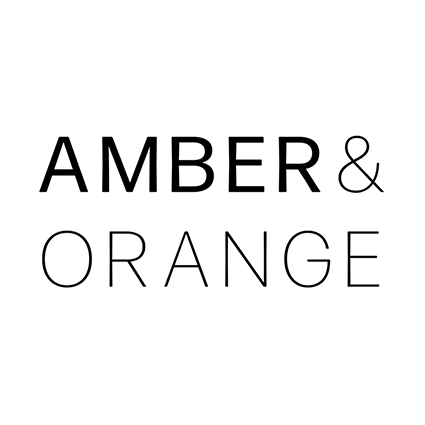

A personable, and readily contactable team make testing a straight-forward and pleasant process."
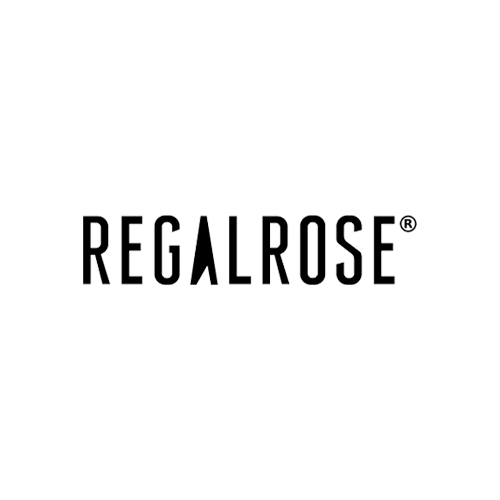
Plating Thickness, Plating Wear & XRF
- Plating Thickness
- Plating Wear Test
- XRF
The XRF technique is used to establish the plating sequence of layers applied to the surface of a substrate. Once the sequence has been identified, a specific programme is created to measure the thickness of the top and in some cases subsequent layers on the surface.
The report will detail the elements detected in the layers and the thickness of each in microns.
The quality of plating of articles is assessed by considering the percentage degradation of Plating after simulating two years wear. During use and storage, jewellery may be subjected to scuffing by contact with foreign materials, this in turn can lead to a degradation in the plating. AnchorCert Analytical has developed an accelerated test which simulates 2 years of use, which is designed to ascertain the degree to which a coating/plating, can withstand such conditions and how it will perform during service.
-No change – no abrasion (0%-20% degradation in plating);
-Slight change – barely perceptible abrasion (21% to 40% degradation in plating);
-Moderate change – obvious signs of abrasion (41% – 60% degradation in plating);
-Distinct change – distinct change (61% – 80% degradation in plating);
-Severe change – coating is severely marred or removed (81% – 100% degradation).
No change, slight change and moderate change are categorised as ‘acceptable’. However, for the other two categories a view may be taken depending upon the type of item and its intended use and suitability. In some cases Customers may conclude that a severe change in plating wear is acceptable to their product, especially if the item is of a very low cost.
XRF is typically a non-destructive elemental composition analysis by X-ray fluorescence. It is always recommended that measurements are taken on the surface of the sample, both before and after a small layer of the surface has been removed. This ensures that any surface coatings or contamination can be observed and accounted for, providing the most accurate report. The report will include all the elements detected and the proportion of each in percentage.
Quality & Performance Testing
- Packaging test
- Waterproof test
- Tarnish tests
- Temperature/Humidity test
- Sulphurous agent tarnish test
- Impact drop test
- Pull/Tensile test
- Porosity test via XRF & consultancy
- Stone adhesion
- Colour measurement of gold
- Colour grading of white gold alloy
Testing packaging to identify tarnish accelerants. The accelerated tarnish test from the Analytical Laboratory for testing packaging materials involves the identification of the presence or absence of components responsible for causing tarnishing or staining of products. This test is primarily for packaging that is in direct contact with silver, low carat gold and base metal items. Test results indicate the type of tarnishing or staining and the relative distribution of the materials causing it. Test conditions are such that if any volatile sulphides or any other compounds which cause tarnishing are present, then they will cause the control sample of uncoated silver to tarnish. This can be a very valuable ‘early warning’ system for retailers, preventing unsuitable packaging from causing large shipments to tarnish and become unsaleable as has often happened in the past.
This method allows us to review packaging that may cause tarnishing of precious metal alloys, plated jewellery and other artefacts. The packaging is disassembled and placed in an environment of high humidity and a relatively high temperature. Control samples of uncoated silver were placed in the same environment to see if the packaging caused any tarnishing. Under the test conditions if any volatile sulphides or any other compounds which could cause tarnishing are present then they will cause the silver articles to tarnish. The method used was developed in house and is based upon international standards.
See more about Packaging Test
This method involves a series of tests specifically designed to evaluate the durability and performance of jewellery under conditions simulating regular user activities and environmental scenarios. The comprehensive testing process exposes the jewellery pieces to a variety of carefully controlled conditions. These conditions include high humidity, mildly acidic substances, saline, chemicals, sulphur-based compounds, chlorine, body fluids, seawater, heat, and light. This exposure phase is followed by a detailed assessment to gain a holistic understanding of the item’s quality, durability, and resistance to tarnishing.
Our Waterproof Test guarantees that the plating of the jewellery exhibits superior resistance to regular atmospheric conditions and frequent consumer usage over an extended period of time. This verifies the quality of your product and these items can therefore be sold and advertised as waterproof.
See more about Waterproof Jewellery testing
The Tarnish Resistance Test combines methods from appropriate Standards to create one combined, cost-effective test to determine whether an item is susceptible to tarnishing.
The Synthetic Perspiration Test is a specialised evaluation designed to mimic the corrosive effects of human sweat on materials such as metals and coatings. This test is particularly significant for items like jewellery and sports equipment that frequently come into direct contact with skin. By simulating the composition and acidity of human perspiration, this test aims to predict how materials will react to sweat exposure over time, thereby providing insights into product durability, safety, and quality. The results can inform modifications in material composition, coating treatments, or product design.
The surface/coatings of the sample are tested to assess the level of resistance of the surface/coating to the test conditions.
Coatings are exposed to controlled humidity and condensation conditions through a heating and cooling process within a specialised chamber. The quality of the coating is assessed based on the observed degree of corrosion or deterioration against the test conditions. The methods employed for this study were developed in-house and adhere to international standards.
This test is appropriate for articles that have received special treatment (such as a protective coating intended to minimise the effects of attack by sulphur bearing compounds), to test the effectiveness of the treatment.
Test samples are exposed to sulphide fumes in a humid atmosphere to simulate the action of environmental sulphide attack, which is the basic cause of tarnishing of precious metal alloys.
An in-house developed method based upon international standards
Establishes the resistance to adhesive failure during impact on stones (includes glass, plastic and metal posts and inserts) glued in the settings.
AnchorCert Analytical is fully equipped to carry out Hardness Vickers testing to determine the hardness of a metal item.
AnchorCert Analytical uses method BS EN ISO 6507-1 to help determine the value of hardness according to the Hardness Vickers Chart.
The lower the value, the softer the metal is
(Please note this may damage the test article).
This test gives an indication of the quality of the gold, rhodium or platinum coating on a base metal alloy. Its purpose is to highlight any corrosion of the base metal alloy in areas where there are inconsistencies in the surface coating.
To assess whether stones in stone set articles are adequately set or glued to the setting by using a tape adhesion method and/or ultrasonic stone adhesion procedure.
This test can be used to determine the colour of gold, plating and other metal alloys. This is a useful tool in maintaining consistency through the casting or plating process. It can also provide a quantitative comparison between the tested material and benchmark colour values, indicating whether the difference in colour is enough to be visible to the human eye.
The colour of gold plating is influenced by the chemical composition and operating conditions of the gold plating bath. Use of a colour measuring spectrophotometer provides a scientific approach to controlling plating conditions.
Sample Size: Flat test pieces are ideally required (minimum sample dimensions are 8mm diameter or square measurable area).
A numerical grading system has been established for white gold alloys using the ASTM Yellowness Index D1925. The Index is calculated from the CIE (International Commission of Illumination) Tri-stimulus values, X, Y and Z which are measured using a spectrophotometer.
Sample Size: Flat test pieces are ideally required (minimum sample dimensions are 8mm diameter or square measurable area).
FAQ
The AnchorCert Protect methodology identifies the allergenic potential of metal elements present in products and allows only those products deemed to ‘Pass’ to enter the marketplace which considerably reduces the risk of a product causing an allergic reaction to human skin. The ‘Pass’ result from the AnchorCert Protect testing methodology indicates that the component is kind to skin, and it is less likely to cause metal-induced Allergic Contact Dermatitis (ACD) commonly known as skin allergy to an already sensitised individual; thus, preventing both induction and elicitation phase. This means complete freedom from metal allergy.
They are currently being tested under the AnchorCert Protect methodology to identify their potential to cause an allergic response in the product matrix. The product showing an even remote possibility of causing an allergic response to human skin is rejected.
The term ‘Contact Dermatitis’ is used when the skin inflammation is caused by contact with something in its immediate environment. There are two types of Contact Dermatitis – Allergic Contact Dermatitis (ACD) and Irritant Contact Dermatitis (ICD).
Nickel Regulation (section 27 of Annex XVII, REACH)
Lead/Cadmium Regulation (section 63 & section 23 of Annex XVII, REACH)
RoHS Directive (applicable to watches)
General Product Safety Regulation 2005
AnchorCert Protect not only meets the RoHS compliance criteria (excludes Phthalates) applicable to watches their accessories and similar products but also ensures that a product is safe from a skin allergy point of view and from both lead & cadmium poisoning risk by misuse of such articles caused by acute exposure due to ingestion and chronic exposure due to accidental mouthing of articles.
The AnchorCert Protect methodology also has unlimited scope for expansion; the research is ongoing for including various other regulations and products within its scope. The upgrade will be available as and when accreditation is granted, and software updated accordingly.
These are the unique part of AnchorCert Protect methodology. No other currently known method has such a distinction.
Section 1 of the Trade Descriptions Act 1968 prohibits the use of false claims in relation to goods. Section 3 of the same Act extends and defines this prohibition. Thus, a false trade description “is a trade description which is false to a material degree” and “a trade description which, though not false, is misleading… shall be deemed to be a false description”.
Note: Trade Descriptions Act 1968 has now been replaced with Unfair commercial practices directive 2005/29/EC (“The UCPD”)
The Local Authorities Co‐ordinating Body on Trading Standards (LACOTS) are of the view that data should be collected before making any such claims. This advice highlights the risks associated with absolute claims given the variabilities involved in metal release related procedures, and the absence of alternative recognised methodology for comparing findings. Instead, and in the absence of a recognised definition, LACOTS recommends the following approach to make an absolute claim about allergy:
identifies where every effort has been made to reduce allergenic potential.
does not state or imply that all allergy suffers will benefit where this is not the case; and
can be supported by appropriate data.
Keeping the spirit of above recommendation of LACOTS in view we can state that to date we have collated the test data for thousands of items, verified our findings both by customer evidence which includes positive patch testing data from various sources, customer trial by assessing product return data, experimental studies and by applying scientific logic and also in-house laboratory experiments as appropriate and believe that we can substantiate in a court of law the accuracy of the AnchorCert Protect test methodology with regard to meeting the above stated claims.
Epidermis – This is an outer layer of skin, no thicker than a sheet of paper.
Dermis – This thick middle layer makes up most of your skin. Dermis contains blood capillaries, nerve endings, sweat glands, hair follicles, and other structures.
Hypodermis – This layer is situated under the skin, which is mainly fat.
Chemicals/soluble metal ions can be absorbed through millions of sweat glands located all over our bodies, and hair follicles and cross the epidermis into the dermis area of skin to cause an immune reaction.
The AnchorCert Protect methodology identifies the allergenic potential of metal elements present in products and allows only those products deemed to ‘Pass’ to enter the marketplace which considerably reduces the risk of a product causing an allergic reaction to human skin. The ‘Pass’ result from the AnchorCert Protect testing methodology indicates that the component is kind to skin, and it is less likely to cause metal-induced Allergic Contact Dermatitis (ACD) commonly known as skin allergy to an already sensitised individual; thus, preventing both induction and elicitation phase. This means complete freedom from metal allergy.The AnchorCert Protect test methodology measures the release concentration of the potentially known 16 metallic skin sensitisers and provides an accurate measurement of their sensitisation potential based upon their reaction with novel artificial sweat and the formation of soluble metal ions.
‘Pass’ results indicate that the component is kind to skin, and it is less likely to cause metal-induced Allergic Contact Dermatitis (ACD) commonly known as skin allergy to an already sensitised individual; thus, preventing both induction and elicitation phase. This means complete freedom from metal allergy.
A ‘Fail’ result indicates that the component parts may not be suitable for contact with human skin and may cause metal-induced Allergic Contact Dermatitis (ACD).
Jewellery and similar items complying with the AnchorCert Protect threshold release limits can be classed and marketed as AnchorCert Protect Compliant.
The test procedure also ensures that the test sample identified as compliant by AnchorCert Protect methodology shall also be compliant for nickel when tested by EN1811 + A1:2015 method. The success rate has been above 99%.
They are currently being tested under the AnchorCert Protect methodology to identify their potential to cause an allergic response in the product matrix. The product showing an even remote possibility of causing an allergic response to human skin is rejected.
In compliance with the GPSD Directive, the supply chain must ensure that only safe consumer products are sold in the European Union (EU); consumers must be informed of the risks that are not immediately perceptible via the use of a suitable warning, e.g.
CONTAINS COBALT, CAUSES SENSITISATION TO THE SKIN (H 317).
Sections 28, 29 and 30 of Annex XVII of REACH clearly states that the entire supply chain, including consumers, must be notified, (within 45 days, if requested), if CMR (Carcinogenic, Mutagenic and Repro-toxins) substances are present in an article in quantity exceeding: 0.1% by mass of the mixture.
Members of the supply chain must be able to prove to the regulatory body (e.g., TS) responsible for overseeing market discipline:
That they have ordered products or components free of problems.
That they have received products or components free of problems.
That they have made sure that they have verified the absence of the problem, this is possible if exposure is adequately controlled to as low a level as is reasonably practicable.
In the above example, Cobalt as the metal itself is a CMR. When present in jewellery, watches & in similar products, it may form CMR substances such as chlorides or oxides of cobalt due to its migration on contact with body sweat. Such exposure presents the greatest risk to human health if the rate of metal release exceeds the already accepted threshold values set out for those metals in EU/US regulations (safe harbour limit).
The AnchorCert Protect test methodology has been validated in such a way that it’s ‘compliance report’ would ensure that that any metal allergens and their compounds, if present or formed during the end use of the product would cause less risk to human and comply with the requirements of General Product Safety Directive (GPSD) from a ‘Skin-Sensitisation’ point of view.
We can confirm that, to the best of our knowledge, no other laboratory in the world is offering a similar or matching test. However, to verify our claim concerning minimising skin allergy related incidences even in already sensitised individuals, thus preventing both sensitisation and elicitation phase, you may wish to undertake trials yourselves and compare results findings obtained from AnchorCert Analytical via the AnchorCert Protect Test with results of items from other laboratories if you believe they offer a similar test.
The Patch testing is used frequently by dermatologists to identify the cause of allergic reaction to human skin. ESSCA (the European Surveillance System on Contact Allergies) is an EU network; they collect data on patch-tested patients across Europe. A recent analysis by the European Surveillance System on Contact Allergy (ESSCA) network based on 2002–2010 patch test data across Europe, showed a high frequency of skin allergy:
23.4% of the EU population is sensitised to Nickel
9.3% to Cobalt
5.6% to Chromium
Similarly, the North American Contact Dermatitis Group (NACDG) reported positive responses to Nickel in 19.5%, Cobalt in 8.4% and Chromium in 4.1% of the 5,085 patch-tested subjects.
The science of nickel sensitisation is well established and understood, but the science of other metal(s) induced allergic contact dermatitis are not well understood. ANCHORCERT PRO RESEARCH PROJECT UNDERTAKEN BY ANCHORCERT GROUP IS ADDRESSING THIS ISSUE.
We have studied the patch test data from all over the world to identify the metal allergens responsible for triggering metal-induced Allergic Contact Dermatitis. The following elements have been identified to have the potential to cause an allergic reaction to human skin: Ni, Cr, Co, Au, Hg, Be, Pd, Pt, Mn, Al, Cu, Fe, Mo, Sn, Ti, Zn.
They are currently being tested under the AnchorCert Protect methodology to identify their potential to cause an allergic response in the product matrix. The product showing an even remote possibility of causing an allergic response to human skin is rejected.
It is highly unlikely that the product marked as compliant with the AnchorCert Protect test methodology will cause an allergy to human skin. The compliance results from the above methodology not only provide the complete freedom from metal allergy even to those who were already sensitised, but method also ensures that the product meets the requirements of the EU nickel regulation (section 27 of Annex XVII, REACH) and of General Product Safety Regulation 2005 from a skin allergy point of view. The following four legislations are mainly applicable to jewellery articles, including watches.
Nickel Regulation (section 27 of Annex XVII, REACH)
Lead/Cadmium Regulation (section 63 & section 23 of Annex XVII, REACH)
RoHS Directive (applicable to watches)
General Product Safety Regulation 2005
AnchorCert Protect not only meets the RoHS compliance criteria (excludes Phthalates) applicable to watches their accessories and similar products but also ensures that a product is safe from a skin allergy point of view and from both lead & cadmium poisoning risk by misuse of such articles caused by acute exposure due to ingestion and chronic exposure due to accidental mouthing of articles.
The AnchorCert Protect methodology also has unlimited scope for expansion; the research is ongoing for including various other regulations and products within its scope. The upgrade will be available as and when accreditation is granted, and software updated accordingly.
These are the unique part of AnchorCert Protect methodology. No other currently known method has such a distinction.
Section 1 of the Trade Descriptions Act 1968 prohibits the use of false claims in relation to goods. Section 3 of the same Act extends and defines this prohibition. Thus, a false trade description “is a trade description which is false to a material degree” and “a trade description which, though not false, is misleading… shall be deemed to be a false description”.
Note: Trade Descriptions Act 1968 has now been replaced with Unfair commercial practices directive 2005/29/EC (“The UCPD”)
The Local Authorities Co‐ordinating Body on Trading Standards (LACOTS) are of the view that data should be collected before making any such claims. This advice highlights the risks associated with absolute claims given the variabilities involved in metal release related procedures, and the absence of alternative recognised methodology for comparing findings. Instead, and in the absence of a recognised definition, LACOTS recommends the following approach to make an absolute claim about allergy:
identifies where every effort has been made to reduce allergenic potential.
does not state or imply that all allergy suffers will benefit where this is not the case; and
can be supported by appropriate data.
Keeping the spirit of above recommendation of LACOTS in view we can state that to date we have collated the test data for thousands of items, verified our findings both by customer evidence which includes positive patch testing data from various sources, customer trial by assessing product return data, experimental studies and by applying scientific logic and also in-house laboratory experiments as appropriate and believe that we can substantiate in a court of law the accuracy of the AnchorCert Protect test methodology with regard to meeting the above stated claims.
We can help ensure that you conform to REACH regulation. Our UKAS accredited laboratory offers all necessary REACH tests, and our professional staff are experts in this field and closely involved in the latest developments. AnchorCert Group, which is part of the Birmingham Assay Office, is involved in these developments and commits itself to keep our Customers up to date with any changes they need to be aware of.




